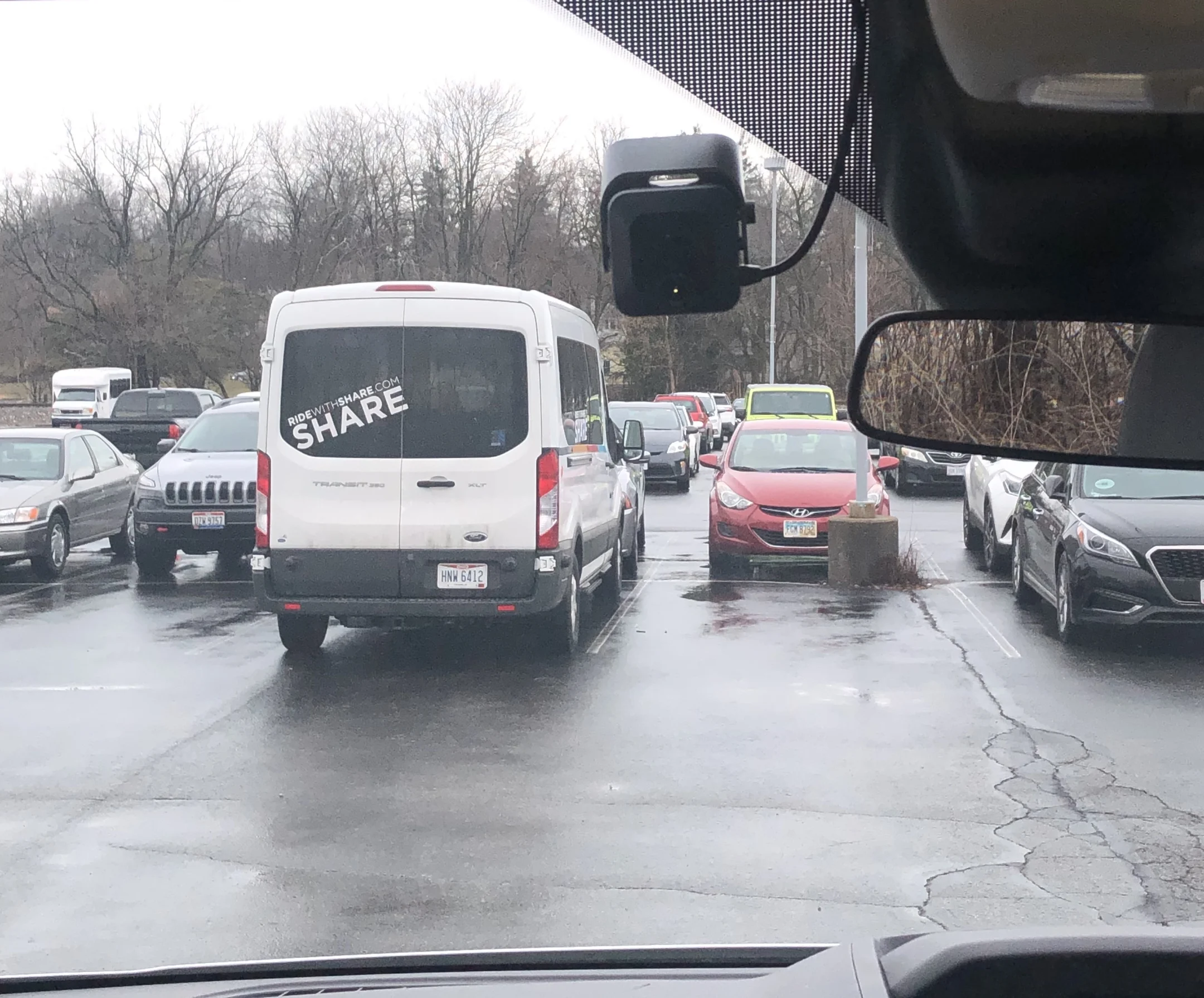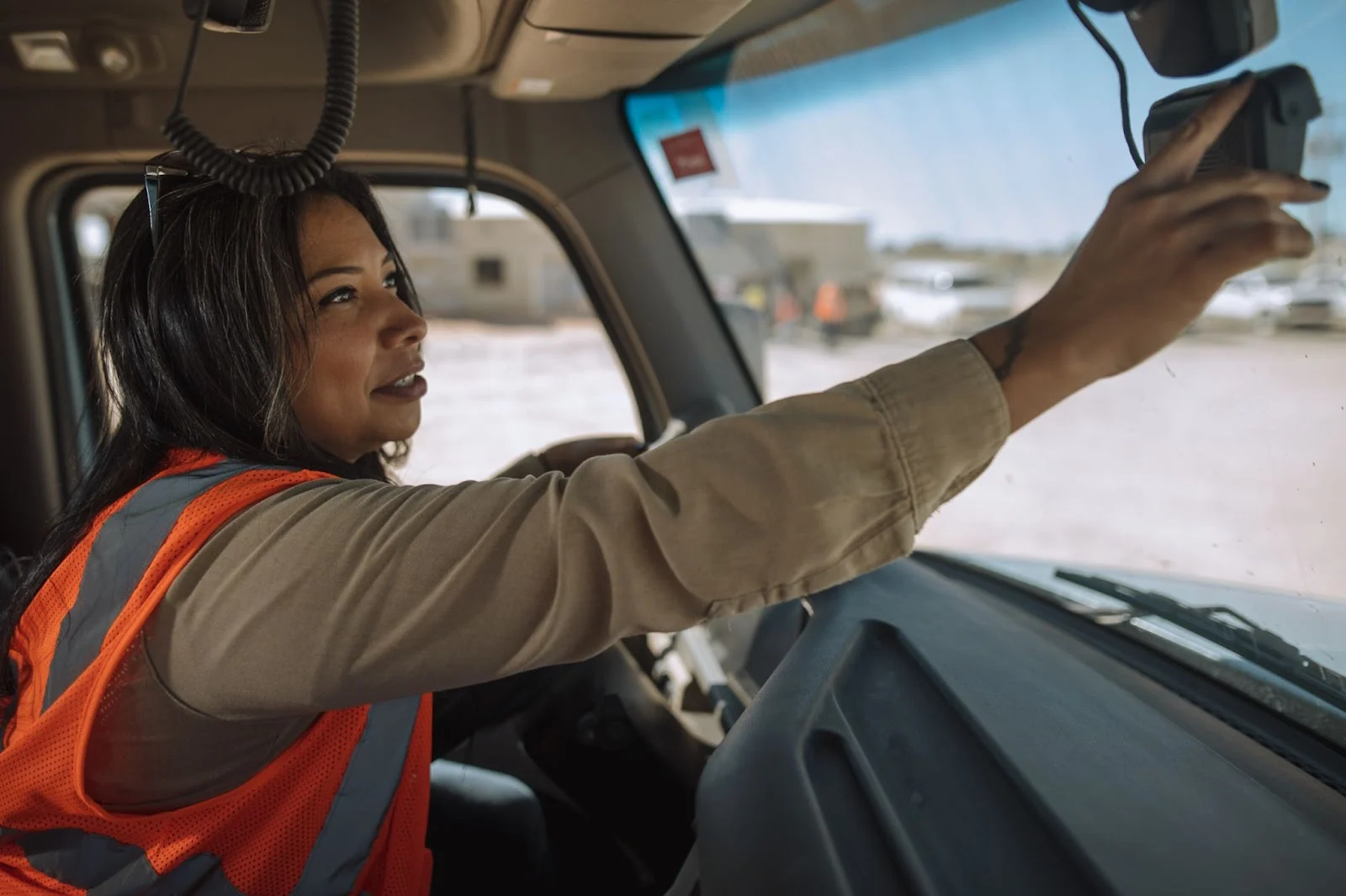Safety
Camera Angles: Drivers and Managers Share Their Views on Dash Cams
February 21, 2019

Get the latest from Samsara
Subscribe nowDash cameras allow fleets to provide more personalized driver training, flag unsafe practices for review, and exonerate innocent drivers in the case of an accident. Driver reactions to dash cams, though, can be varied, so striking a balance between protection and privacy is critical to a successful dash cam rollout.
How do drivers feel about dash cams and the impact they have on their day to day? How can managers ensure drivers feel protected? We asked drivers and management alike to share their perspectives on video-based safety.
Building Trust through Communication
SHARE, a micro transit organization based in Ohio, operates a fleet of passenger vehicles for senior centers and schools. Safety is a top-of-mind initiative for the entire company.
“We’re in the business of transporting people,” explained COO Mike Eckel, “and the way we build success as an organization is through building trust. Obviously, safety is a large component of that, particularly when we’re dealing with the elderly and with kids.”
SHARE’s vehicles are equipped with dual-facing dash cameras, and driver compensation is partly based on safety performance, as measured by Samsara safety scores. According to Eckel, “Drivers are paid a base hourly rate and a bonus on top of that, based on their safety score. Drivers who are safer earn more money.”
Dalandrea Whiteside is a driver supervisor for the SHARE team. Along with driving routes, she is also responsible for driver oversight and training. When she began driving with SHARE, the cameras were a new addition to her daily routine.
“When the cameras were first installed, I was like, ‘Wow, there’s a camera staring me in the face,’” explained Whiteside. “A lot of us joked around like, ‘What if they’re watching us pick our noses or something.’” Despite her initial hesitation, Whiteside found that her perspective shifted over time: “I realized that it’s not just someone watching me, it’s for my safety.”
In her role as driver supervisor, Whiteside also presents the camera’s merits to other drivers. “The biggest thing is letting drivers know that this thing isn’t here to watch you, it’s here to protect you and others on the road,” Whiteside explained. “Drive safely and don’t pay the cameras any attention!”
Eckel echoes Whiteside’s sentiments, highlighting that strong communication and the right incentives are essential. "Some folks pushed back on the cameras. They felt it was invasive," Eckel said. But when he demonstrated the varied benefits, he noticed the tide began to turn. "Once you explain why we're tracking and how that can help avoid further incidents, they're on board.”

Protecting Drivers from False Claims
Shane Ford, an employee of Louisiana-based Protected Cargo Transport, has been a commercial driver for over 15 years. His favorite part of the job? “Driving!” Ford confessed with a laugh. “I like getting to see the country. You get to see all the seasons–spring, summer, fall, and winter.”
Ford has had a camera on his truck since February 2018 and doesn’t even notice it anymore. “It’s there, it’s just part of the truck,” Ford said. “It’s there for my safety and everybody else’s safety, too.”
Ricky Gaspard, Safety Director at Protected Cargo Transport, also sees the cameras as critical for protecting both drivers and the company. “A driver never wants to get blamed for something they didn’t do,” said Gaspard. “Drivers feel protected knowing that if something were to ever happen, they can be exonerated.”
This perspective has been reinforced over time, as drivers overcame initial hesitancy and saw real-world examples of cameras disproving false claims. “At first they were all against it, but in the first three months we had three accidents where we were completely exonerated,” explained Gaspard. “I guarantee you, two of those accidents we would have been sued over $50K.”
Ford agrees, adding, “It’s there to make sure if someone pulls out in front of you, it catches everything, so you’re not at fault.” Ford also found that camera footage has made it easier to communicate with safety management. Instead of explaining why a harsh braking incident wasn’t his fault, Ford knows that Gaspard can automatically review the footage and see for himself. In one example, an SUV pulled out in front of Ford’s truck on the highway to make an exit. Ford pumped the brakes to avoid an accident, triggering a harsh event.
“Gaspard called me 10 minutes later,” Ford said. “He viewed the footage and said, ‘Well, they didn’t give you much room!’” Ford appreciated Gaspard's thoughtfulness. “He was just checking in to make sure everything was all right.”
Interested in learning more about Samsara’s safety offerings? Check out our dash cams, or contact us for a free trial today!
Learn more about SamsaraGet the latest from Samsara
Subscribe now

















